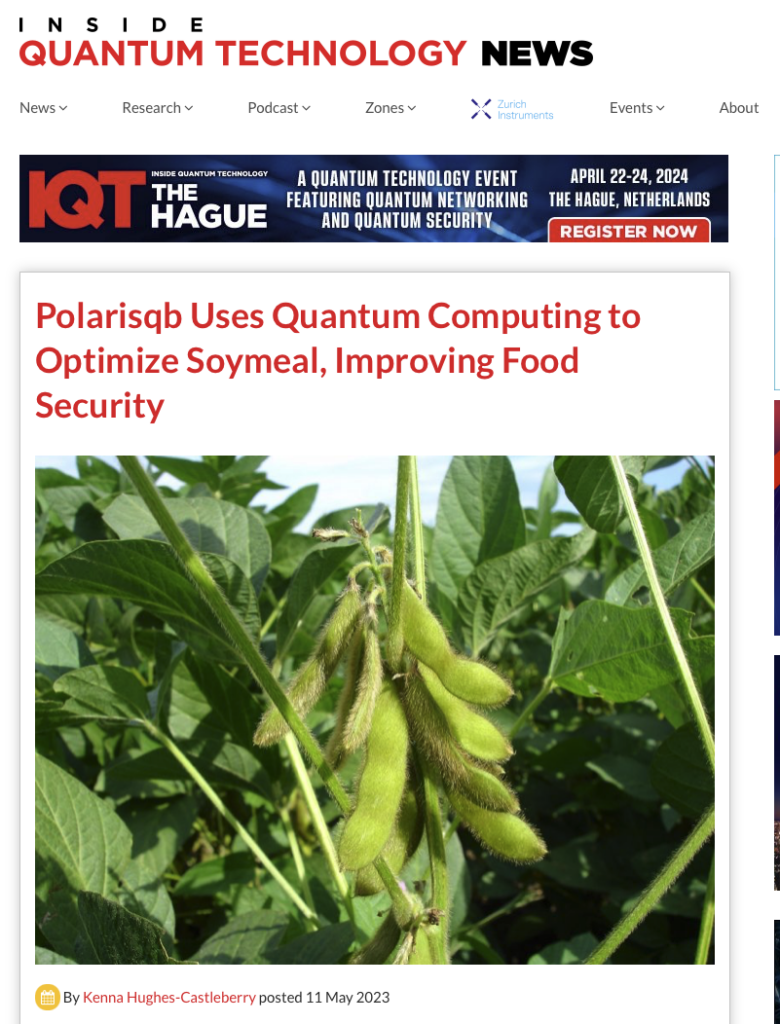POLARISqb was recently the runner up in the Soy Innovation Challenge, and this news was covered by Kenna Hughes-Castleberry of Inside Quantum Technology:
May 11, 2023
Polarisqb Uses Quantum Computing to Optimize Soymeal, Improving Food Security
As around 345.2 million people worldwide are predicted to be food insecure this year, 
Designing Peptides
While Polarisqb also researches molecules for drug design, they recently realized they could use their technology for other essential applications. “About a year and a half ago, our lead chemist, Dr. Kendall Byler, realized that the same system that we’re using to design these small molecules, we could also use to design novel peptides,” explained Maurice Benson, Polarisqb, Principal Software Engineer.
Quantum computing can help optimize feed additives to make proteins more digestible by utilizing quantum algorithms to optimize the behavior of these additives at a molecular level. These simulations can provide insights into how different variables affect the properties of the additives, allowing researchers to design better processes for producing them. For example, quantum optimizations could help identify the most efficient additive to lower the waste in producing plant-based proteins, which could help reduce the environmental impact of food production and increase the availability of nutritious foods. Benson added: “In understanding that application, we started looking for different avenues where Polarisqb could introduce quantum-designed peptides.”
To read the full article, please visit Inside Quantum Technology.


